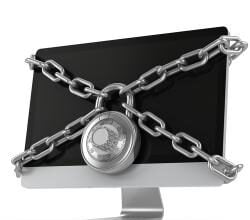Call-to-action (CTA) buttons on a website are meant to catch a user’s attention and get that individual to perform an action. These buttons usually contain text that explains to the user what action he or she will be performing.
Call-to-action (CTA) buttons on a website are meant to catch a user’s attention and get that individual to perform an action. These buttons usually contain text that explains to the user what action he or she will be performing.
 On general websites, the most common CTA buttons tend to be “Buy Now” and “Subscribe Now.” When it comes to health care websites, CTA buttons are a little different in nature; such buttons may include “Give Online” or “Learn More.”
On general websites, the most common CTA buttons tend to be “Buy Now” and “Subscribe Now.” When it comes to health care websites, CTA buttons are a little different in nature; such buttons may include “Give Online” or “Learn More.”
The following three factors are important to keep in mind when developing effective CTAs.
Placement
While many believe a good call-to-action is to be placed “above the fold” on a website, studies now show that conversions are most effective “below the fold.” Instead of making it the first thing a user sees, try to match the CTA’s placement with the complexity of the user action.
Although this might require presenting a larger batch of data, research suggests that it may better to give users time to digest the info before they make a decision. In the healthcare world, instead of just having a button asking people to donate, give a few reasons on why they should donate.
Being specific about how that money will be used could increase conversions. Telling users that the donations will be used for a new piece of equipment or emergency room renovations is likelier to elicit a response than just mentioning a general repair fund.
Copy
One major reason a person may not click on your call-to-action is a lack of urgency. Terms like “Free Trial” or “Learn More” are used everywhere and don’t make the action feel urgent – plus they’re kind of boring. Instead, use a combination of action keywords as well personal pronouns such as “us” or “you” in your buttons.
Here’s one example of effective CTA copy: “By donating today, you can personally help save this person’s life.” Imagery is just as important as good copy. Instead of using a typical button, swap it for a patient’s face; make sure to get consent first. By combining personalization and urgency, the above example makes quite the impression.
Size/Shape
A lot of people think that bigger CTAs are always better. In fact, history shows that the opposite is true. Putting oversized buttons on your website can make you appear overly aggressive – many prospects will be turned off by the pressure.
You’re better off making the buttons proportional with the rest of the design. This well-balanced approach will also help when your site is being viewed on the smaller screens of mobile devices. In most circumstances, rectangular buttons are the most effective in getting clicks while circular buttons have been shown to be among the least effective.
CTA buttons play a critical part into a healthcare facility’s website. Every demo and website is different, and some variable testing may be required.









